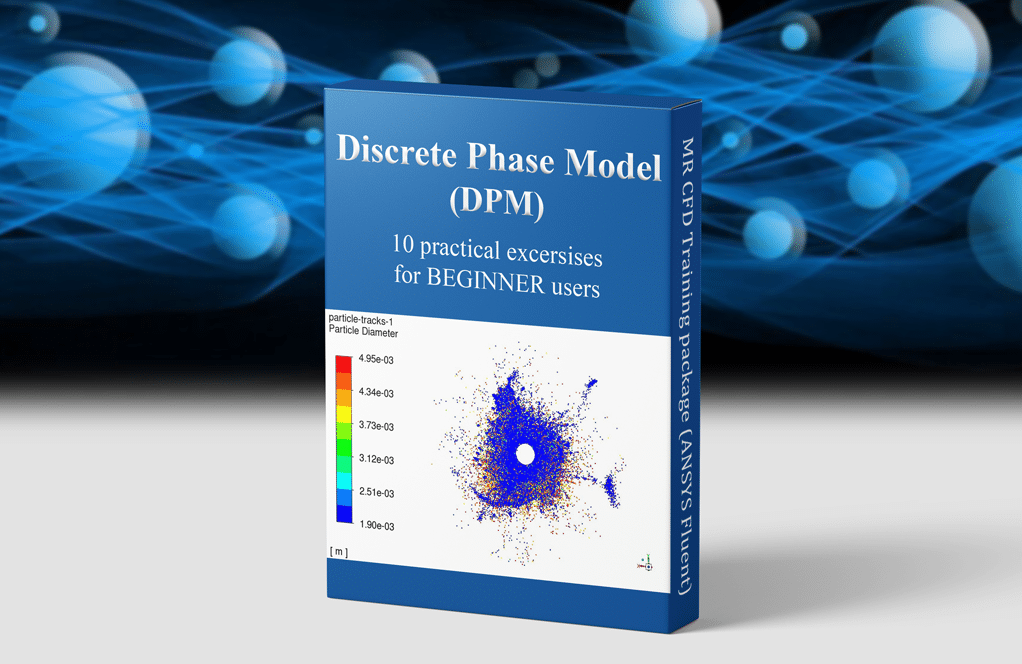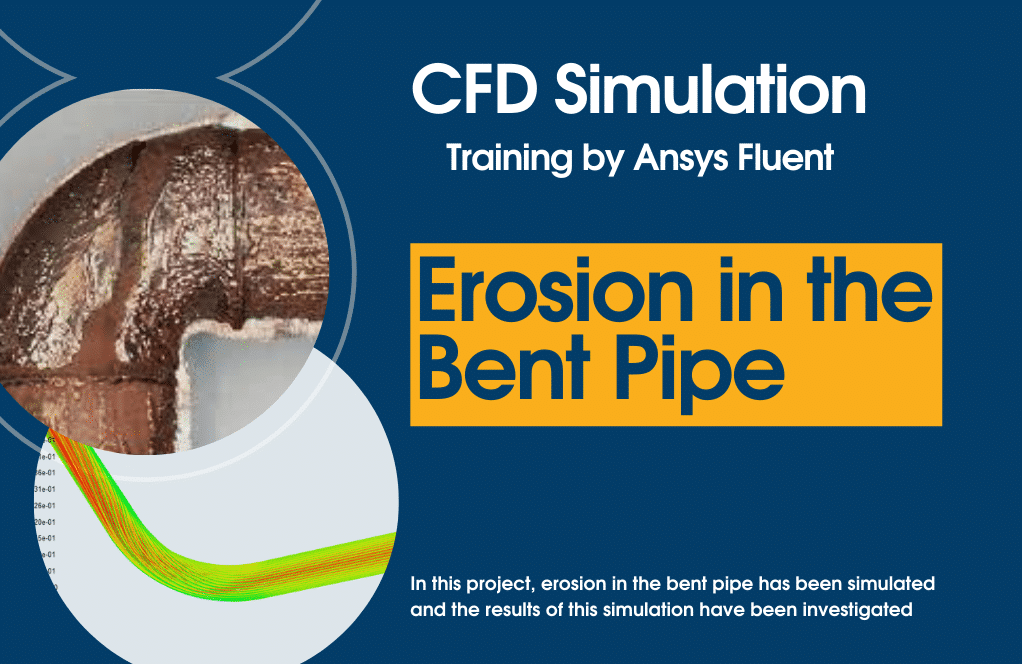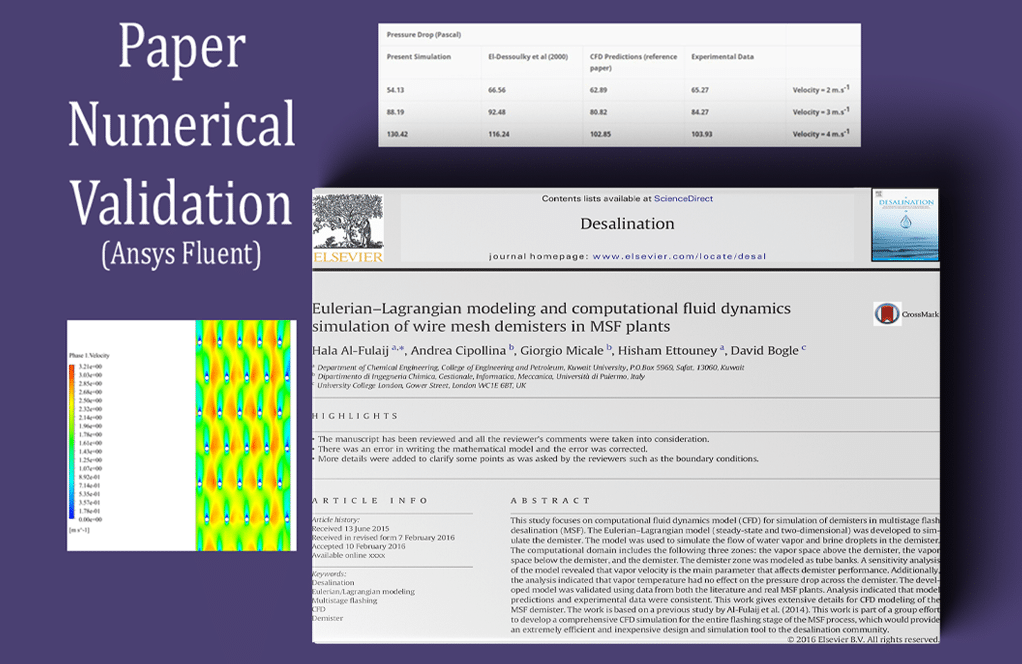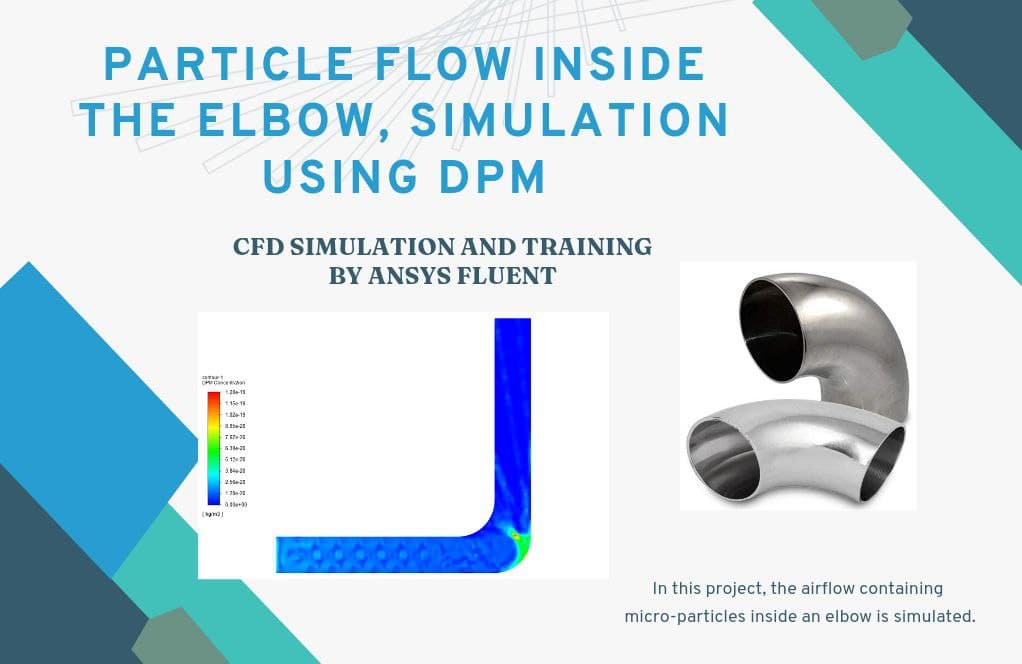DPM CFD Simulation Training Package, BEGINNER Users, 10 Learning Products
Original price was: $860.00.$97.00Current price is: $97.00. Student Discount
This training package includes 10 practical Discrete Phase Model (DPM) exercises using ANSYS Fluent software. MR CFD suggests this package for BEGINNER users new to this module.
Click on Add To Cart and obtain the Geometry file, Mesh file, and a Comprehensive ANSYS Fluent Training Video.To Order Your Project or benefit from a CFD consultation, contact our experts via email ([email protected]), online support tab, or WhatsApp at +44 7443 197273.
There are some Free Products to check our service quality.
If you want the training video in another language instead of English, ask it via [email protected] after you buy the product.
Description
Discrete Phase Model (DPM) ANSYS Fluent CFD Simulation Training Package for BEGINNER Users
This training package includes 10 practical Discrete Phase Model (DPM) exercises using ANSYS Fluent software. MR CFD suggests this package for BEGINNER users new to this module.
Covid-19 Pandemic
Coronavirus (Covid-19) is known as the most significant human challenge in the world today, and the high transmission rate of this disease is very problematic. In project number 1, based on the CFD method, an attempt has been made to simulate the release of virus particles from a Coronavirus patient’s mouth while TALKING and transmitting it to another person in a specific space (social distancing). This study aims to investigate the ability of virus particles to propagate and transmit at a distance less than a social distance.
One of the most important doctors’ recommendations regarding preventing disease transmission between people is the use of special masks or shields at low social distances. In project number 2, an attempt has been made to simulate the release of coronavirus particles from a patient’s mouth while talking and using a SHIELD to prevent transmission to another person. This study aimed to evaluate the effectiveness of using a shield or mask as a barrier on a patient’s face against the spread of virus particles.
DPM in Natural Phenomena
Many phenomena in nature, such as rain or snow, or airborne dust, can be thought of as scattering particles in the air fluid. In project number 3, SNOWFALL in the park is investigated. In this simulation, two types of material are used: air and particles that snow in a Disctere phase material. Plus, Trajectories of particles within the park were observed.
In project number 4, numerical simulation of dust particles entering from the windows into a room has been done. In this project, the dust particles entering the building at a speed of 0.25 m/s are examined, and the house’s sedimentation and dust movement are depicted. Also, a two-way DPM model is used.
In project number 5, numerical simulation of wind-driven rain has been done. The purpose of this project is to investigate the movement of raindrops in wind conditions of 5 meters per second, which has been done in two ways, one-way DPM and two-way DPM. The diameter of the drops is 0.5 cm, but in order to be seen better, they have been scaled in contours and animation.
Erosion
Unfortunately, the fluid is not pure in almost all industrial applications, so erosion causes problems in pipeline transport. Also, an issue that reinforces this event is the amount of flow turbulence. The more turbulent the flow, the greater the momentum is flowing by the particles. The impacts on the transmission pipeline are greater when the flow changes direction, resulting in more erosion. In addition to the flow turbulence, other factors such as particle size, the rate of particle flow redirection, the number of particle impacts to the surface, and the flow rate also influence the amount and profile of the erosion. The other endpoint is that erosion is usually where the flow redirects. This is precisely why fasteners and joints’ erosion profile at the knees is generally examined, and it is investigated in project number 6.
In project number 7, the airflow containing micro-particles inside an elbow is simulated. Air enters the pipe with a velocity of 17 m/s and carries particles until it reaches an elbow. Most of the particles will collide with the outer elbow surface and gradually erode the pipe’s inner surface. The standard k-epsilon model is exploited for solving the turbulent fluid flow equation. And finally, In project number 8, the simulation is modeling erosion in the bent pipe by a Two-way DPM Erosion Model to see the erosion rate in the pipe. Working fluid is water liquid, and sand particles are DPM injections. Particles are inert and with no initial velocity.
Trapper
Multi-phase flows were classified into different groups, including dispersed multi-phase flows common in engineering systems. In such a flow, one phase is considered the carrier phase, in which particles, bubbles, and droplets are dispersed and form other phases. CFD simulation plays a prominent role in optimizing the design of distributed multi-phase flow systems. In project number 9, an attempt has been made to simulate and analyze the flow of a particle trapping mechanism called the discrete phase trap (TRAPPER). The flow containing continuous and dispersed phases enters the computational domain with a speed of 5m/s and the standard k-epsilon model is exploited for solving fluid flow equations.
DPM in Medical application
In project number 10, Asthma Spray in human lungs was investigated using the one-way DPM (Discrete phase material) method. In this simulation, two types of material are used: air and particles that enter the lungs in a Discrete phase material. Trajectories of particles within the lung were observed. The air inlet velocity enters the field at 5 m / s with a gravity of -9.81 m / s-2 on the z-axis.
You can obtain Geometry & Mesh file and a comprehensive Training Movie that presents how to solve the problem and extract all desired results.














Stuart Lueilwitz –
How does this training package handle the interaction between discrete and continuous phases?
MR CFD Support –
The training package uses sophisticated algorithms to manage the interaction between the discrete and continuous phases. This ensures a smooth and accurate interaction, which is crucial for accurate DPM simulations.
Kristopher Daugherty –
I’m just starting with DPM simulations. Does this package provide any beginner-level exercises?
MR CFD Support –
Yes, the package includes exercises that are specifically designed for beginners. These exercises will help you understand the basics of DPM simulations and will provide a strong foundation for more advanced studies.
Rafael Cruickshank –
How accessible is this package for a novice in DPM simulations?
MR CFD Support –
This package has been crafted keeping user-friendliness in mind, complete with a detailed guide that proceeds in a step-wise manner and practical exercises. This approach aids beginners in grasping and implementing DPM simulations effectively.
Prof. Dulce Swift –
Absolutely thrilled with the DPM CFD Simulation Training Package by MR CFD! As a beginner, I found the gradual progression through each project really built up my confidence in using ANSYS Fluent. The clear explanations, detailed scenarios, and practical applications, such as the Covid-19 particle transmission and the medical inhaler analysis, not only enhanced my understanding but also kept me engaged throughout the learning process. Big kudos for making complex simulations so accessible to newcomers!
MR CFD Support –
Thank you so much for your positive feedback on the DPM CFD Simulation Training Package! We’re really pleased to hear our training module has been effective in elevating your CFD skills from a beginner’s perspective. It’s wonderful to know that the varied projects and real-world applications have enriched your learning experience. We look forward to providing you with more helpful resources, and should you have any more questions as you advance, don’t hesitate to reach out to us!
Prof. Nia McKenzie –
I noticed that this package includes 10 practical exercises. Can you tell me more about the complexity of these exercises?
MR CFD Support –
Absolutely, Shima. The exercises included in the package range from basic to advanced levels. They are designed to gradually introduce you to the complex aspects of DPM simulations, starting from fundamental principles and gradually moving towards more complex scenarios.
Kasandra Adams –
I’ve been using the DPM CFD Simulation Training Package for beginners, and it has been extremely helpful for someone like me with little prior knowledge. The variety of projects, from natural scenarios to industrial applications, made it easier to grasp the concepts and the step-by-step tutorials were superb for learning. Kudos to MR CFD for putting together such a versatile and educational package!
MR CFD Support –
Thank you so much for your kind words! We are thrilled to hear that the DPM Training Package lives up to your expectations and has been instrumental in your learning journey. If there’s anything more we can do to assist or enhance your experience, feel free to reach out. Your success is our goal, and your feedback helps us continue to improve our products. Keep enjoying the simulations!
Dr. Brody Ullrich –
This DPM CFD training package was a comprehensive start for my journey into particle tracking using ANSYS Fluent. I especially enjoyed the variety of applications covered, from environmental to medical. Each project built upon my understanding and allowed me to appreciate the subtle complexities of dealing with discrete phases. Highly recommended for anyone starting out!
MR CFD Support –
We’re thrilled to hear that our Discrete Phase Model CFD Simulation Training Package met your expectations and provided a solid foundation for your ANSYS Fluent learning path. Reading about your satisfaction with the diversity and educational value of the projects truly makes our efforts worthwhile. Thank you for choosing MR CFD and for your warm recommendation!
Kaitlin Zulauf V –
This DPM training package has dramatically enhanced my understanding of particle dynamics in various scenarios. Each project added depth to my learning, especially the simulations on virus transmission and industrial erosion. Grasping these complex phenomena has been made easier with MR CFD’s well-structured training content.
MR CFD Support –
Thank you for your positive feedback! We’re thrilled to hear that our DPM training package has been instrumental in your learning journey. It’s great to know that the content’s structure and the variety of projects have helped deepen your understanding of particle dynamics. We appreciate you choosing MR CFD to support your journey into CFD simulations.
Lavonne Gibson DVM –
I found the DPM CFD Simulation Training Package to be an amazing starting point for a beginner like myself. The real-life scenarios like Covid-19 particle spread and the erosion in pipes provided me with a practical grip on applying CFD solutions effectively. Thanks, MR CFD for such a tailored and insightful package!
MR CFD Support –
We’re thrilled to hear that the DPM CFD Simulation Training Package met your learning needs and helped you apply CFD solutions to real-world scenarios. Thank you for your positive feedback and for choosing MR CFD to start your journey into CFD applications. Your enthusiasm keeps us motivated to continue providing quality training for our users. If you have any further questions or need additional guidance, feel free to reach out to us at any time!
Shany Kunde –
I’ve worked on several of the projects included in the DPM CFD Simulation Training Package, and I’m genuinely impressed by the breadth of applications covered, from natural phenomena like snowfall and wind-driven rain to medical applications like the Asthma Spray simulation. It’s been an enlightening experience seeing how DPM caters to such varied fields. One question though – are these simulations computationally intensive, and what’s the typical runtime for beginners to complete them?
MR CFD Support –
Thank you for the positive feedback! We’re pleased to hear that you’ve enjoyed the variety of simulations. Regarding your question, the computational intensity of DPM simulations can vary widely depending on the complexity of the geometry, the number of particles simulated, and the specified physical conditions. For beginners using this package, we’ve designed the simulations to be approachable, with runtimes manageable on standard personal computers. Typically, projects can take anywhere from a few hours to a couple of days. We’ve made sure that even those new to CFD can get practical results without requiring access to high-performance computing resources.